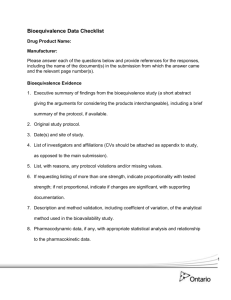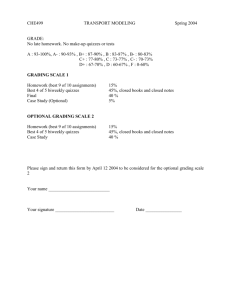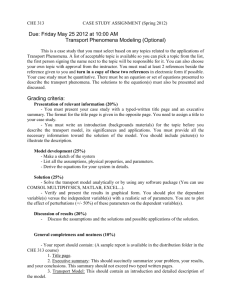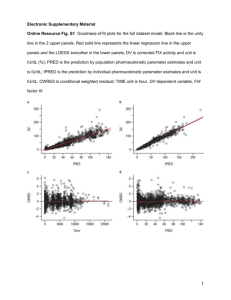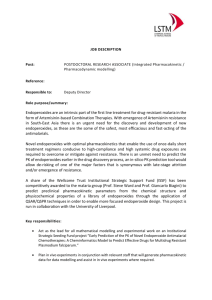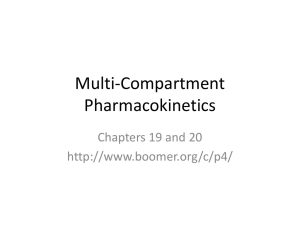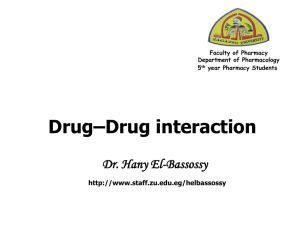BeST – Bioequivalence Study Template Pekka Heikkilä, CEO StatFinn Oy
advertisement
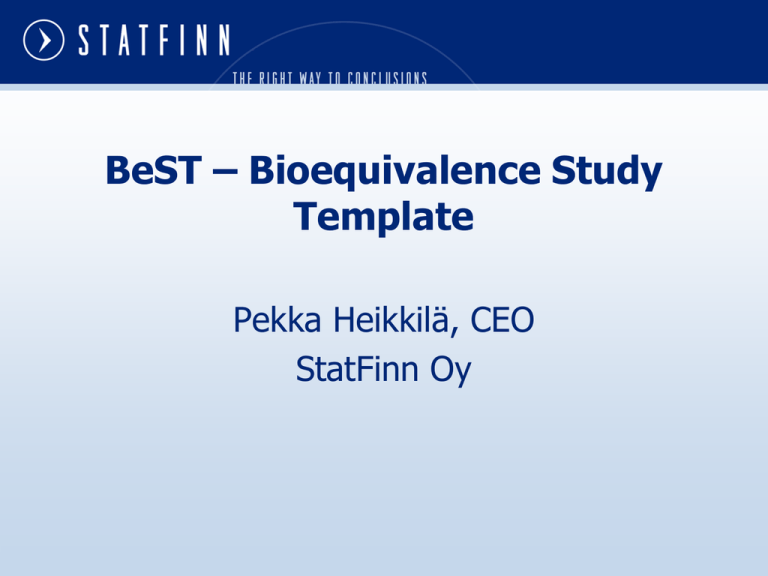
BeST – Bioequivalence Study Template Pekka Heikkilä, CEO StatFinn Oy Introduction Project Triangle Quality Time Cost 2 Introduction Bioequivalence Study • Pharmacokinetic two-by-two cross-over study is frequently used in drug development to evaluate bioequivalence of two products. • The bioequivalence studies are strictly regulated and are therefore repeated in similar and standardized manner. 3 Introduction Study Process analytics clinical PC data kinetics PP data statistics outputs writing report eBeST Process Overview BeST Modules PC data Secure TA data WEB portal DERIVE PKCALC APPENDIX PKSAR DATA BASE PC data PCOther data data Complient with FDA CFR part 11 and Guidance of Computerized Systems Used in Clinical Trials PK Report BeST Process SAS Modules DATA BASE SDTM data Results data DERIVE APPENDIX PKSAR PKCALC TLGs Appendix PK Report Input Data Concentration Data (PC) • The main source data is concentration data with the following required variables unique identifier for each subject (USUBJID), description of the sample (ETCD, PCTEST), collection time of the sample (PCDTC), obtained result (PCORRES) and reference time (PCRFTDTC). • Rest of the variables and format to meet SDTM specifications are derived. 7 Input Data Study Design Data (TA) • In the study design data we are collecting information regarding periods (VISITNUM), treatments (ETCD) and treatment sequences (ARMCD). • This is the information needed to analyze the data according design of the study. 8 Input Data Additional Data • In addition to the minimum required data PC and TA additional information is collected from the web portal and used as meta information for the report. • The BeST tool can also be used to report other datasets (DM, VS, PE, AE etc…) or use calculated PK parameters as its input. 9 Calculation of Pharmacokinetic Parameters Cmax-Tmax-Clast-Tlast-AUCt • The pharmacokinetic parameters are calculated based on non-compartmental analysis. • The following parameters are collected directly from concentration data Maximum concentration in the plasma (Cmax) as the highest plasma concentration value, The time when Cmax is reached (Tmax), The last observed concentration above limit of quantification (Clast) and the time when Clast is reached (Tlast). • The area under the plasma concentration curve (AUCt) is calculated using the linear trapezoidal rule. 10 Calculation of Pharmacokinetic Parameters Cmax-Tmax-Clast-Tlast Tmax Cmax Tlast Clast 11 Calculation of Pharmacokinetic Parameters AUCt DATA auc; SET pc; x = elapsed; y = pcstresn; xpre = LAG(x); ypre = LAG(y); xdif = x - xpre; auc = xdif * (( y + ypre ) / 2); RUN; ti 1 ti AUCt (ci ci 1 ) 2 i 0 n 1 AUCt 12 Calculation of Pharmacokinetic Parameters AUCinf 13 Calculation of Pharmacokinetic Parameters Kel • The elimination rate constant (Kel) describes the rate of decrease in concentration per time. is estimated from the log-linear terminal part of the concentration-time curve, as the slope of natural logarithm of concentration against time. Data points that belong to the terminal log-linear phase are evaluated based on coefficient of determination, which is calculated with Huber’s M robust regression. For each patient the highest coefficient is selected and the corresponding regression model is used in the estimation of Kel. Y 0 1X PROC ROBUSTREG DATA=pc METHOD=M(CONVERGENCE=COEF(EPS=0.0001) MAXITER=999999); MODEL log_conc = elapsed; RUN; 14 Calculation of Pharmacokinetic Parameters Kel 15 Calculation of Pharmacokinetic Parameters Kel, Thalf, AUCinf, AUCextrap T½ ln( 2) / K el AUC AUCt (Clast / K el ) AUCextrap 100 (Clast / K el ) / AUC 16 Calculation of Pharmacokinetic Parameters Comparison of Methods Ratio of AUC∞ with different Kel evaluation methods The bioequivalence conclusion based on AUC∞ is the same for any of the methods presented above. 17 Statistical analysis Analysis of Variance Model • The assessment of bioequivalence is based upon 90% confidence intervals for the ratio of the population geometric means for the pharmacokinetic parameter. • A confidence interval for the difference on the log scale between formulations is obtained from analysis of variance model and then back-transformed to obtain the desired confidence interval for the ratio on the original scale. Yijk ik j jk k ijk PROC MIXED DATA=pp ORDER=internal; CLASS usubjid armcd visitnum etcd; MODEL log_var=armcd visitnum etcd; RANDOM usubjid(armcd); ESTIMATE 'Test / Reference' etcd -1 1 / ALPHA=0.1 CL; LSMEANS etcd / ALPHA=0.1 CL; RUN; 18 Statistical analysis Analysis of Variance Model 19 Pharmacokinetic Analysis Report Outputs Graphics Estimated geometric mean ratios Mean concentration-time profiles Overlaying individual concentration-time profiles Individual concentration-time profiles Tables Descriptive statistics of demography Summary statistics of PK parameters Statistical analysis for PK parameters Summary statistics of concentrations Summary statistics of sampling times Listings Demographical variables Individual subject ratios (Test/Reference) Listing of individual PK parameters Individual concentration data Adverse events PK calculations Individual subject concentration graphs (semi-log) Individual subject concentration graphs (Tmax-Tlast) Line plot (All possibilities) Summary of exclusions Summary table with all possibilities (Points, Kel, AUCt/AUCinf, …) 20 Pharmacokinetic Analysis Report Outputs 21 Pharmacokinetic Analysis Report Report 22 System Safety Data Security Client • • • • Portal Server StatFinn Connections secured with the SSL encryption. Data stored directly to the server behind a firewall. Version controlled environment build on server. VPN connection used to access the server. 23 Summary Benefits Keep with Timelines Final pharmacokinetic analysis report from a concentration data reported within a day. Control your Budget Standardizing routine and repeated tasks to have resources in more demanding activities. Top Quality Validated system with automated calculation of pharmacokinetic parameters. Kiitos ! 25
